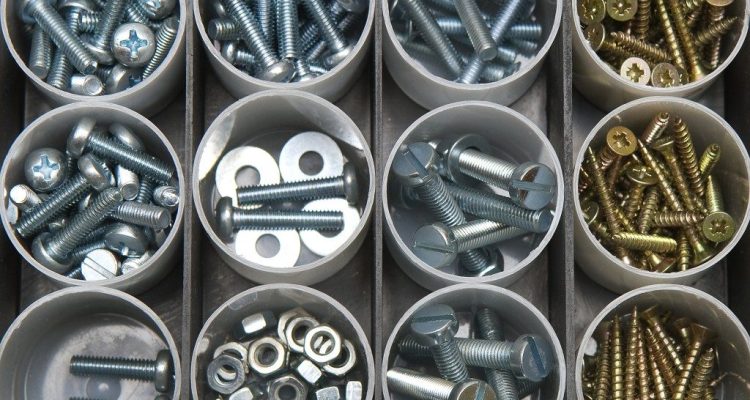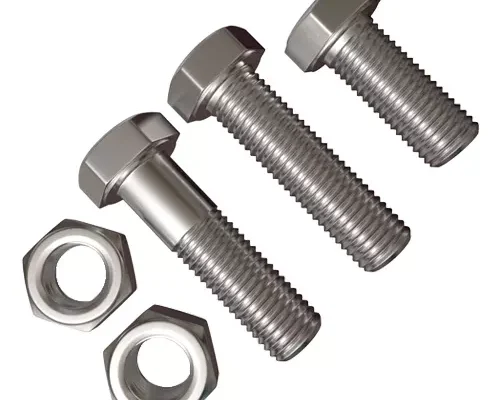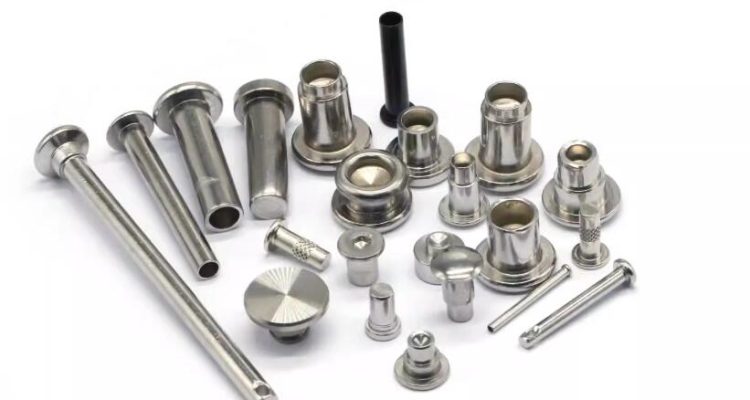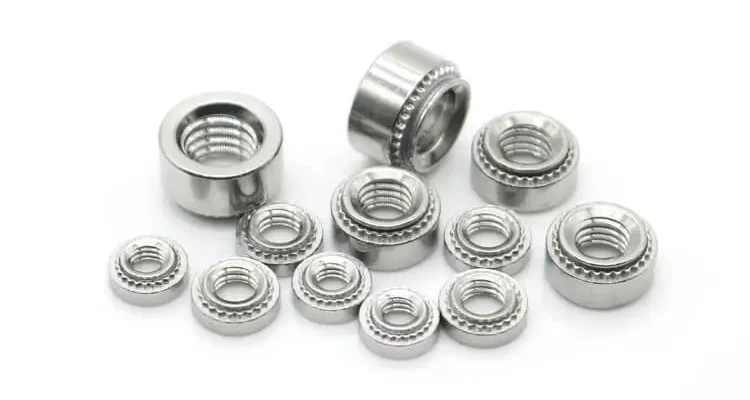
What Are PEM Nuts And How To Install Them
PEM nuts are specialized fasteners designed for use in thin materials, providing strong threaded attachments without pre-tapping. They come in various types, suited to different applications. Installation typically involves pressing them into pre-drilled holes, making them ideal for industries like electronics and automotive. Their main benefits include durability and ease of installation, although correct alignment is crucial to avoid common installation issues.
Understanding PEM Nuts
PEM nuts-the staple of current assembly methods-are specifically designed to produce solid, re-usable threads in thin-metal sheets that can not support tapped threads. Typically used in industries such as electronics, automotive and aerospace, these fasteners enable the joining of components with a reliable mechanical join yet without conventional nuts and bolts.
Nature and Design
Designed by skilled professionals using durable materials such as stainless steel, carbon steel or aluminum making them resistant and long-lasting. They generally have a knurled or serrated shank which causes them to be also known as rolled t-nuts, and when pressed into the drill creating in the piece metal they displace some of typically the material around often the pit. It also safely tightens the nut by seating right with it’s metal surface, hence improved pull-out resistance. One of the nuts has a flange at its top that is engineered to distribute load over more area, which protects both nut and base material under high-torque conditions.
Variants and Specifications
PEM nuts are designed to meet particular purposes and installation needs, thus there is a variety of them:
- Self-clinching nuts: These are for permanent installation in the material. With the installation of these components, stable threads are formed even in metal sheets as light as 0.
- Through holes with floating nuts: They accommodates up to 0.4 mm of adjustment (for applications where alignment precision is challenging).
- Rivet nuts: Ideal for joining where the back of a panel is inaccessible, they create threads without requiring rear access to fasten another nut.
- All are available in sizes from M2 to M10 in metric, and #2-56 to 3/8-16 imperial units making it easy for designers pick the best fit. In addition they range on load capabilities in tens of 1000’s kilos, and set up power.
The Role of Material Choice
Material Selection: Choosing the right material for PEM nuts is essential to part functionality. Stainless steel nuts are used in marine environments or where there is a need for sterilization, such as the creating of surgical importance and similar small equipment because they perform well against corrosion after being chemically termed. These nuts are ideal for applications where the weight of the nut is a major concern as seen mostly in aerospace or high performance automotive sector. Despite being a cost-effective choice, carbon steel nuts are also sturdy which make them among the most popular for general industrial applications.

Types of PEM Nuts
It is one of the many specialized fasteners intended to be used in different assembly environments, each type meeting certain mechanical and budget requirements. A deeper dive into the most popular varieties of PEM nuts, their peculiarities, differences and cost nuances as well may shed light on for what purposes they are beneficial.
Self-Clinching Nuts
Self-Clinching Nuts are among the most durable and reliable that we fabricate, made out of solid materials like steel, stainless steel or aluminum. The nuts are embedded into the metal sheets through a process of pressing that deforms zones around them in such a way as to secure their threaded insertion by immobilizing them. standard-steel-self-clinching-nuts-for idom an as-low-as-a-few-cent price-per-piece in high-volume; thus, these fasteners are inherently cost-effective for the vast majority of installation. Leveraging self-clinching nuts boasts one key advantage: their ability to resist torque and pull out from high-stress applications such as automotive assemblies or industrial machinery. They also provide good life and vibration resistance.
Floating Nuts
Floating nuts are a step up the sophistication scale and have been designed to accommodate minor alignment issues in assembled components. These are important in assemblies that need to experience frequent thermal expansion or dynamic loads capable of causing a fixed component become misaligned. Floating nuts typically come at a price that is 10-20% higher than their standard self-clinching counterparts, due to costlier design. But, the higher expense is counteracted through requiring substance to be less exact in other parts of their assembly. And so the total manufacturing cost drops. This flexibility is essential in precise applications where exact alignment can be critical, like aerospace and electronics.
Blind Nuts
Blind PEM nuts are designed to be used in applications where you can only reach one side of a panel, which would be similar to the enclosures or casings. Such nuts believe to be 15-30% higher in cost as compared with standard self-clinchings (depends on material and size). The main benefit this provides is a one-side installation that results in neat and secure fixing on the side which cannot be accessed after assembly. This suit them to consumer electronics and automotive applications alike, combining cosmetics with serviceability.
Broaching Nuts
Broaching nuts are the best selection when it comes to non-metallic materials, like plastics and printed circuit boards (PCBs). These nuts have been designed with ridges (or flutes) for a specific purpose: they are intended to be used as an anti-spin, which mechanically prevents the nut from being spun out. Due to their limited use and somewhat meticulous manufacturing methods, broaching nuts may cost anywhere from 25-50% more than what metal would be priced out at. They are ideal for fragile applications, such as electronic devices and where plastic parts form part of a lightweight assembly; their benefits include the provision of reliable fastening that secures without stress or cracking the host material.
Installation Process
Installing a PEM nut helps to provide positive mechanical attachment in thin sheet material assemblies and is essential for robust attachments with increased fatigue loading capability. This shows a systematic step by step process of how to install PEM nuts paying particular attention the importance accuracy and correct use of tools.
Preparation
- Material Check: First, check the host material for clean and be flat. Irregularities on the surface or simply debris can disrupt with the installation integrity. If surface treatment is performed such as painting or plating, it must be done prior to installing PEM nuts (to prevent damage or contamination).
- Installation Equipment: Choose from a press-fit machine or use manual hand tools according to the size of your PEM nuts. This tool should utilize the correct die set for gripping and holding onto the outer diameter of a specific PEM nut matching such that when pressure is applied, it does this evenly across all sectors.
Drilling
- Pinpoint the Hole: Take great care to mark on the base material of your PEM nut exactly where you are about to drill. When you will measure each person’s body size or any part of the clothing, do it meticulously with a duly calibrated tool such as calipers in order to verify if marks match design developmental requirements.
- Bore Hole: Bore a hole at the point that you marked. The size of this hole is critical – it needs to be a press fit for enough clamping force in the PEM nut, but not too tight so that it would deform when pressed into place. The hole size should be about 0.1 to 0.2mm over the shank diameter of the nut for a press fit where you can get it in without bending anything, but when its fully inserted there is no slop present between them.
Installation
- To place the PEM Nut: Insert into Pre-Drilled hole making sure flange is flush on material surface. This contact is important as it provides surface area for distribution of loading forces when the nut will be put in use.
- Action: Place press-fit machine or hand tool over PEM nut and apply continuous downward pressure. The necessary force varies between 2,000-5,000 pounds depending on the material and size of nut. By making sure this pressure is exerted vertically, we can avoid tilting the nut and damaging the host material.
Final Checks
- Inspection : The PEM nut should be completely installed and the back end of them must bulge slightly around shank (an evidence that a material displaced to act as fastener lock).
- Try: Pull-out test for the proper required force to remove a nut. The purpose of this test is to verify that the nut has been properly installed and can support loads for which it was designed. In addition to this, they might also be subjected to a torque test so as to ensure the nut can receive enough rotating force while in use.
Post-Installation
- Clean up: Remove metal shavings or waste that have fallen into the area as they can cause delayed assembly processes anda should future corrosion to occur if let remained.
- Document: Log everything, tool setting, force applied and whether the test passed or failed. It is necessary documentation for purposes of quality control and other applications as it may be difficult to troubleshoot issues with system logs, etc.
Common Applications
Industries that require high-reliability and tight tolerance fastening capabilities rely on the use of PEM nuts; these bolts are a critical component to secure parts reliably. PEM nuts are popular in action because of their heavy-duty built and multi-dimensional application layers. In this article, you will find specific examples that illustrate how PEM self-clinching nuts offer significant benefits in a variety of applications across each industry.
Electronics & Telecommunication
Top applications for PEM nuts in the electronics industries are for mounting circuit boards / supporting components within an electronic device possessing limited space. A prime example where PEM nuts are used is in server racks and telecom equipment to provide a secure, vibration-resistant fastening for components such as the drives that needs periodic maintenance or upgrade. The fact that they could be installed from one-side and not needing to have access behind the part made them very valuable within closed environments as in routers or switches cases, where it is impossible for a nut and bolt.
Automotive Industry
PEM nuts, long known for their strength and ability to withstand vibration, heat, corrosion are utilized in a wide range of automotive applications benefits. They are typically used to secure body panels in cars, fasten interior components and attach control units to metal frames. Automotive: The automotive industry uses stainless steel PEM nuts to a large degree because of their high strength, corrosion resistance (which is essential for vehicles exposed to harsh and extreme conditions) and high performance.
Aerospace and Defense
Aerospace Manufacturing Fastening Solutions The aerospace close industry relies on quickly creating arrangements a to give both light weight execution and great quality. PEM nuts are lightweight as they can be made of materials like titanium and aluminum also. They are as well applied in the construct of airframe structures, staking interior cabin panels and even mounting equipment for both commercial jets or military aircraft. Accurate fastening of PEM nuts ensures that delicate aircraft equipment can withstand challanging flight conditions, keeping passengers safely in the air.
Medical Devices
For the assembly of medical devices, sterility and precision are key so while small these little PEM nuts make a big difference. They are highly desired due to their sanitary, level-mount design that is compliant with the sterile requirements of medical gear including MRI units, X-ray devices and surgical tools. When working in a medical application, the cleanliness of their environment is critical and this includes how they put together the devices making sure not to introduce any contaminants or debris that would interfere with it.
Robotics and General Manufacturing
PEM nuts are commonly used in industries such as robotics and general manufacturing because of their mechanical strength, high precision, versatile joint design capability. Additive manufacturing is also known as “3D printing” and it speeds up the assembly, disassembly of mechanical parts in robotic systems where these adjustments or replacements are frequent. The self-clinching property of PEM nuts makes them a permanently threaded into the metal sheets and can absorb all dynamic or repetitive motions typical to robotic applications.
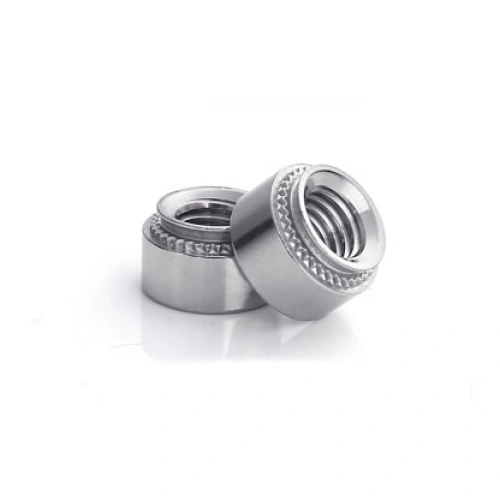
Common Installation Issues
Though PEM nuts are incredibly functional and efficient for fastening, some issues tend to show up while their installation. It is essential to understand these challenges so an easy installation can be achieved and maximum performance of the product in its final assembly.
Incorrect Hole Size
The most common issue is preparing the wrong size of hole in a host material. If the hole is sized too large, there will not be enough material views document to displace and secure a proper grip of PEM nut. On the other hand, a hole too small does not allow this to happen and will lead to either nut or material damage while trying it out. It is very important to have hole size fit the PEM nut as per specification, it should usually be around 0.1 mm — 0.2mm larger than diameter of shank according to this type screw bushing users guide.
Misalignment
Improper alignment in installation of PEM nuts cause all kinds problems such as false seating, improper load bearing etc. This frequently happens when the press tool is even slightly angled away from being perpendicular with surface of material. An incorrectly aligned/placed installation can stress the joint and make it more likely to break when loaded. It requires the correct alignment and operation of tool to solve this problem
Material Deformation
Host Material Deformed: An uneven distribution of pressure when using a press tool or if too much force is implemented while installing may deform the host material and decrease the strength. Influence degeneration could show up as dimpling of the installments or annular de facto bluntness in material, particularly if it is fragile or squishy. By controlling the proper pressure and using a die set that has been correctly designed for ability to accommodate material deformation.
Tool and Die Wear
Even if wear is not an immediate issue, repeated use of installation tools and dies can produce minute amounts of additional bore diameter deviation over time that impedes proper functioning. An old tool or die can result in poorly formed PEM nut installations which may not be very secure, could have deformation problems. To prevent this, you should inspect and maintain the installation tools regularly to make sure they perform consistently all through the duration.
Surface Contamination
Soiled material or PEM nuts, including oils and other chemicals can affect the process of installation as they contain contaminants. Nuts may not seat, or have pressure applied unevenly while fastening, due to contaminants. Cleaning both the surface and the nuts before mounting will improve platic fasteners cleanliness also security.

